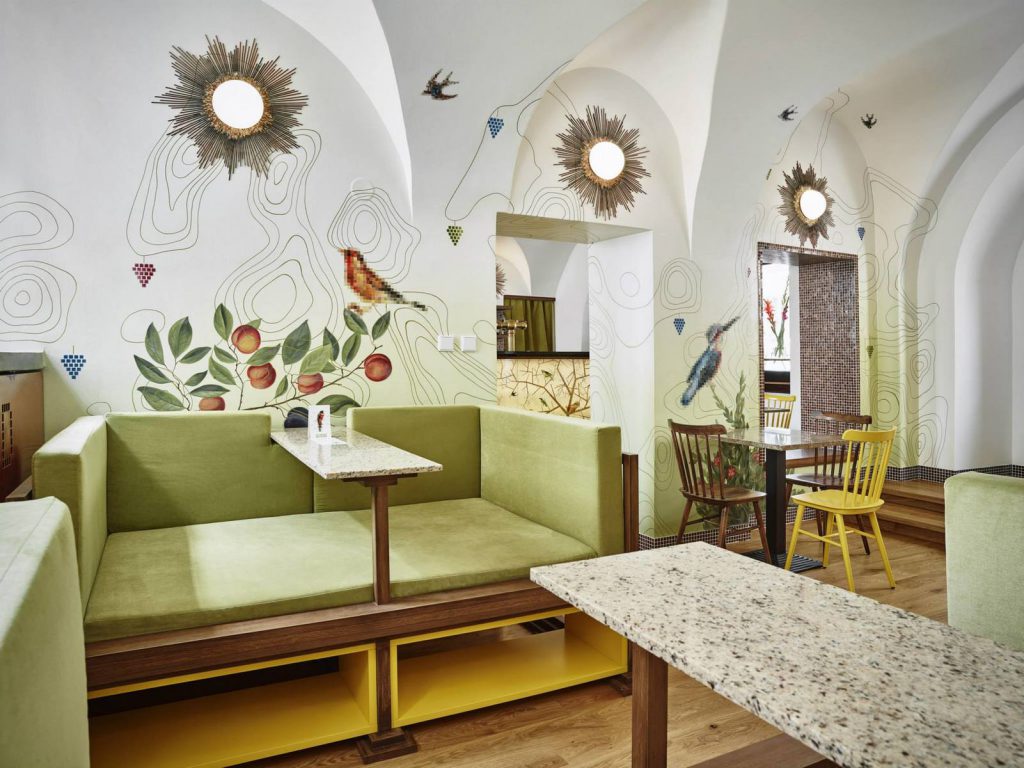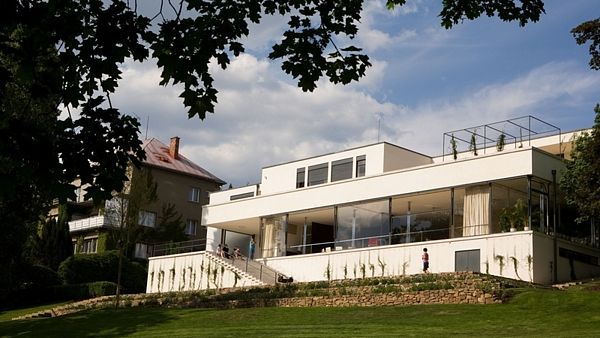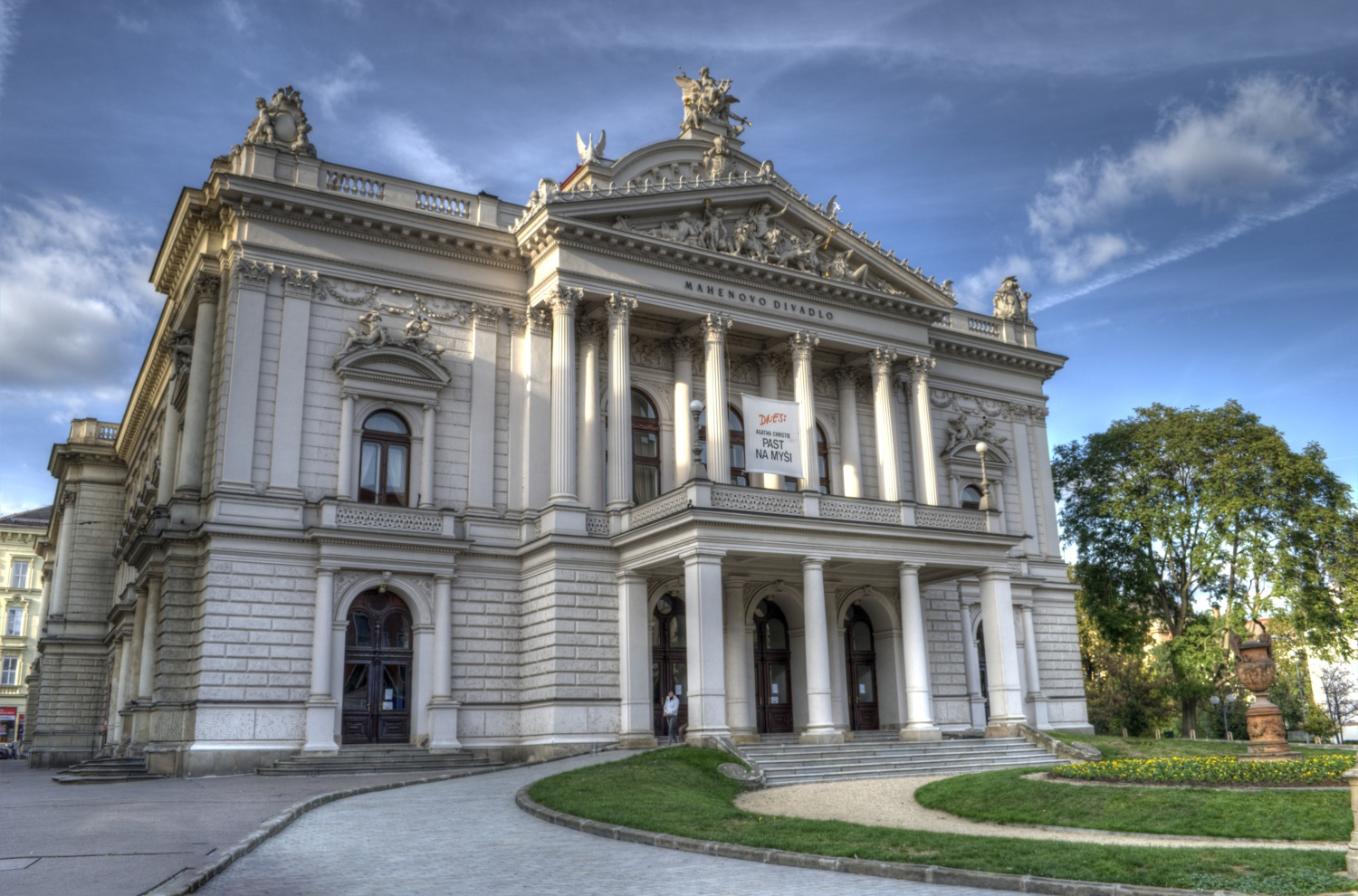Café Pilát: Arabic with a creative twist

It’s fair to say that the food scene in Brno has come a long way since I first moved here in 2007. As this blog can attest to, there is now a cornucopia of options covering cuisines from around the world. While tasty, authentic Vietnamese has long been on offer, a trip out to Olomoucká is no longer a must. Whereas having a good curry once required a pilgrimage to Goa, we are now spoiled for choice. And plenty of new and interesting eateries continue to pop up.
Two cuisines that are relatively lacking, however, are North African and Middle Eastern. Yes, there is the “oasis of spice” that is Klub cestovatelů, but it too necessitates a pilgrim’s devotion. Filling this void, then, is Café Pilát. Located across from its sister establishment Café Tungsram on sleepy Kapucínské náměstí, Café Pilát serves Middle Eastern-inspired food with a creative twist.
The décor (yet another by Martin Hrdina) also deserves a mention. A visually stunning nature motif adorns the walls, featuring hand-painted birds and fruit, contour lines of Brno, and radiant sun light fixtures, all brought to life by the chirp-chirp of two actual live birds. Perhaps as a nod to the food’s origins, decadent diners can enjoy a more relaxed experience on one of two divans.
Café Pilat is open for breakfast, lunch, and dinner and styles itself not only as a restaurant but also a café and wine bar. During the week, lunch is typically an all-you-can-eat buffet. The offer may change from day to day, or even over the course of lunch, but is generally quite tasty. And if you come with a healthy appetite, it is worth the price. They also serve a nice brunch on weekends. It is in the evening, however, that the menu really turns on the style.
On a recent visit, my wife and I shared the vegetable tartare to start and for our mains we had the beef tajine and fillet of seabass. The name aside (why name a vegetarian dish after a distinctly meat-based one), the starter made for a pleasant beginning. Served cold and subtly seasoned with Baharat spices, the vegetables were finely diced and perfectly cooked, maintaining their crunch. Accompanying them were chickpeas with mustard seeds, thick and creamy labneh, and fresh bread. Light and refreshing, it was a good appetite builder.
Whereas the starter was tasty but restrained, the two mains were more playful, each surprisingly drawing inspiration from British cuisine. The sea bass was a play on the British classic fish and chips. It was served with mushy peas but with piccalilli vegetables standing in for the chips. The fish was cooked to perfection – the flesh still moist and slightly flakey and the skin crisp. It was seasoned simply with salt and pepper and turmeric for color. The natural sweetness of the peas was enriched with butter and provided a nice complement to the fish, while the pickled vegetables added a different textural element as well as a counterbalancing acidity and spiciness. All elements worked well together to create a thoroughly enjoyable dish.

While the sea bass perhaps skewed British with only traces of Arabic influence in the spices used, the tajine was just the opposite. A traditional Berber stew, the one served at Pilat combined beef, pickled cherries, almonds and… cheddar. Though a seemingly strange addition on paper, the creaminess of the cheese added extra richness to the tajine and did not seem at all out of place on the palate. The beef was tender, the almonds added crunch and a lightly roasted flavor, and the pickled cherries lent a sweet and sour element to the dish. The tajine was served with fluffy basmati rice topped with chopped parsley and additional cherries.
Overall, it was an entirely satisfying meal as well as a welcome change from the usual Asian fair offered around the city.

